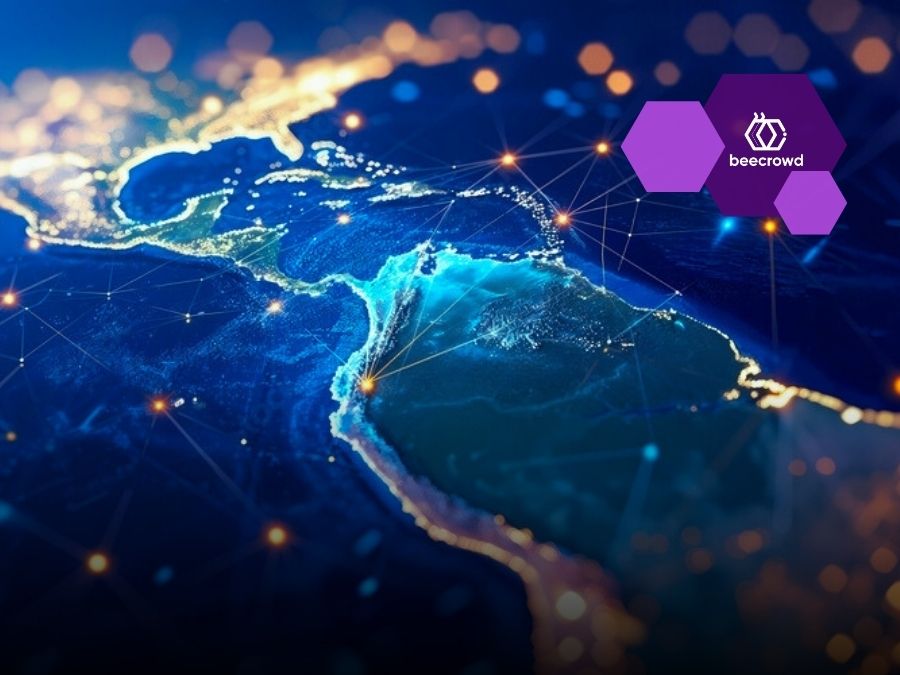

Data Science
(10 minutes of reading) With the increasing availability of data and technological advances, Data Science has become one of the most promising and requested areas in recent years. In this article, we will explore the main concepts, techniques, and applications of Data Science. WHAT IS DATA SCIENCE? Data Science is the process of extracting meaningful knowledge and information from raw data. It involves collecting, cleaning, processing, analyzing, and interpreting large data sets to identify patterns, trends and insights that can be used to make informed decisions. Data science professionals use a variety of tools, algorithms, and statistical techniques to accomplish these tasks. Data is the raw material of Data Science and can be obtained from various sources such as databases, sensors, mobile devices, social networks, and other digital sources. This data can be structured, like tables in a relational database, or unstructured, like text, audio, video, and images. The sheer variety and volume of data available today requires advanced approaches to dealing with it. DATA SCIENCE PROCESS STEPS Data Science involves a systematic, iterative process for extracting meaningful insights from data. While the specific steps may vary depending on the project and context, most data science processes can be broken down into the following steps: 1) PROBLEM DEFINITION In this step, the data scientist identifies the problem or question he wants to answer based on available data. This may involve setting goals, selecting relevant variables and understanding the context of the problem. 2) DATA COLLECTION AND PREPARATION Here, relevant data is collected from various sources such as databases, CSV files, APIs and others. Data can be structured (eg database tables) or unstructured (eg text, audio, video). Then, the data is cleaned and transformed, eliminating missing values, correcting errors and formatting them for analysis. The data preparation step is crucial, as poor quality or incomplete data can lead to inaccurate or biased results. It is necessary to perform an exploratory analysis of the data to understand its distribution, identify potential outliers and make informed decisions on how to deal with them. 3) EXPLORATORY DATA ANALYSIS In this step, data scientists explore the data through visualizations, descriptive statistics, and data mining techniques to understand the structure of the data, identify early patterns, and detect potential problems or anomalies. Data visualization plays an important role in understanding the patterns and relationships present in the data. 4) DATA MODELING Here, data scientists develop statistical models and machine learning algorithms to extract insights from data. This may involve the application of regression techniques, classification, clustering, natural language processing, among others. Choosing the appropriate model depends on the problem at hand and the types of data available. 5) EVALUATION AND INTERPRETATION OF RESULTS In this step, the models and algorithms are evaluated based on relevant metrics, such as precision, recall, accuracy, among others. The results are interpreted and used to answer the initial question of the problem. Interpreting results can involve identifying key factors that affect results and generating actionable insights to make informed decisions. 6) IMPLEMENTATION AND MONITORING The insights and discoveries gained are implemented into practical solutions. It is important to continually monitor the performance of the model and update it as needed to ensure the results are relevant and accurate. Continuous monitoring also allows detection of changes to the data or environment that could affect the effectiveness of the model. DATA SCIENCE TECHNIQUES AND TOOLS Data Science involves applying a variety of techniques and using various tools to perform analysis and extract insights from data. Keeping that in mind, here, we will explore some of the main techniques and tools commonly used in this field, such as: A) PROGRAMMING LANGUAGE Python and R are two of the most popular programming languages for data analysis. Both languages have robust libraries such as Pandas, NumPy and scikit-learn (Python) and dplyr, ggplot2 and caret (R) that facilitate working with data and implementing machine learning algorithms. B) MACHINE LEARNING Machine learning is a subfield of Data Science that uses algorithms to allow automated systems to learn patterns and make decisions based on data. Algorithms such as linear regression, decision trees, neural networks and support vector machines are widely used in this area. Machine learning can be divided into two main types: supervised and unsupervised. In supervised learning, algorithms are trained with labeled data, while in unsupervised learning, algorithms explore patterns present in the data without using prior labels. C) DATA MINING Data mining is the process of discovering patterns and useful information in large data sets. This involves techniques such as clustering, rule binding, anomaly detection, and sequence analysis. Data mining helps identify hidden insights and better understand the data, enabling more informed decision-making. D) DATA VISUALIZATION Data visualization is an essential technique for communicating insights and findings in a clear and understandable way. Tools such as Matplotlib, Seaborn and Tableau allow the creation of interactive graphs and visualizations to explore and present the data. Effective visualization helps in identifying patterns, anomalies, and trends, allowing for a deeper understanding of the data. DATA SCIENCE APPLICATIONS Data Science has a wide range of applications in different sectors and industries. Some of the areas where Data Science plays a key role include: HEALTHCARE In healthcare, Data Science is used for analyzing clinical data, detecting patterns in medical images, predicting disease, and aiding clinical decision-making. Machine learning algorithms can help identify risk factors, predict treatment outcomes, and aid in disease screening and diagnosis. FINANCE In finance, data science is used for fraud detection, credit risk analysis, market forecasting, portfolio optimization and personalization of financial services. Predictive models can identify suspicious activities and anomalies in financial data, helping to mitigate risk and improve the efficiency of financial operations. MARKETING AND ADVERTISING Data Science is widely used in marketing for market segmentation analysis, product recommendation, demand forecasting and sentiment analysis on social media. Machine learning algorithms can identify patterns of consumer behavior and help tailor marketing and advertising campaigns to specific customer segments. TRANSPORTATION AND LOGISTICS Data Science is applied in route optimization, transportation demand forecasting, fleet management and accident prevention. Optimization algorithms can help reduce operating costs, improve supply chain efficiency, and enhance security in logistical operations. INTERNET OF THINGS (IoT) With the growing number of connected devices, Data Science is critical to extracting valuable insights from the data generated by these devices and enabling intelligent automation. IoT real-time data analytics can be used to monitor machine performance, predict failures, optimize energy consumption, and improve user experience. THE FUTURE OF DATA SCIENCE As the amount of data available continues to grow exponentially, data science will become increasingly important. New techniques and algorithms will continue to be developed to deal with the challenges of large scale and complex data. The advancement of artificial intelligence and deep learning will also drive the evolution of Data Science, enabling the analysis of even more complex data and autonomous decision-making. In addition, data science ethics will also become a growing concern. Ensuring data privacy, fair and responsible use of algorithms, and transparency in data-driven decision-making are key issues that need to be addressed. Data scientists must be aware of the ethical implications of their work and look for ways to ensure the equity, inclusion and well-being of people affected by the results and decisions derived from data analysis. CONCLUSION Data Science plays a crucial role in the information age, enabling the discovery of valuable insights from large volumes of data. With the combination of advanced data analysis techniques, machine learning algorithms and specialized tools, Data Science is transforming the way organizations make decisions and conduct their business. If you are interested in venturing into this field, acquiring skills in programming, statistics and mathematics is essential. Learning fundamental data science tools and techniques will open the door to an exciting and rewarding career, allowing you to explore the power of data to drive innovation and growth in many areas. However, it is important to remember that Data Science is not just about data analysis, but also about ethics, accountability and understanding the context in which data is applied. With the conscious and ethical use of Data Science, we can harness its full potential to create a positive impact on society. And there? What do you think of our content? Be sure to follow us on social media to stay up to date!
Share this article on your social networks:
Rate this article:
[yasr_visitor_votes size=”medium”]



